

Name:
Class:




Name:
Class:

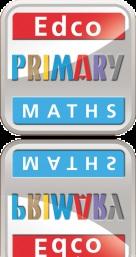
First published 2024
The Educational Company of Ireland
Ballymount Road
Walkinstown
Dublin 12
www.edco.ie
A member of the Smurfit Kappa Group plc
© The Educational Company of Ireland
All rights reserved. No part of this publication may be reproduced, stored in a retrieval system, or transmitted in any form or by any means, electronic, mechanical, photocopying, recording or otherwise, without either the prior permission of the Publisher or a licence permitting restricted copying in Ireland issued by the Irish Copyright Licensing Agency, 63 Patrick Street, Dún Laoghaire, Co. Dublin.
ISBN 978-1-80230-115-1

Design and layout: Design Image
Illustrations: Adrienn Schönberg, Magdi Szabó-Zsombok
Editor: Ciara McNee
Proofreaders: Eric Pradel, Jane Rogers
For permission to reproduce photographs and other images, the authors and publisher gratefully acknowledge the following: iStock: p. 6: Zinkevych; p. 10: Enona; p. 32: Lineartestpilot; p. 40: Dmitriymoroz, Malerapaso; Shutterstock: p. 8, MIA Studio; p. 9: o_m; p. 10: Lukina Anna, Wellyan Saputra, Inna Rogach, Frescomovie, Fuatprasetya; p. 14: Anthony Paz, Horiyan, Avocado_studio, Somchai Som, Maks Narodenko, Bamidor; p. 17: Claudio Divizia, Bestv, Hurst Photo, Alexander Tolstykh, Moving Moment, Mega Pixel, John Sarkar, Kaspri, New Africa, Phttrt; p. 18: Ronstik; p. 19: Zhengchengbao, New Africa, Nina Lishchuk; p. 25: Olleg Visual Content, MattUpholz, Martasimoes3, Arya Wahyu Pratama, L. Rey; p. 26: Stocksolutions, Olha Pashkovska, Chaechaebyv, Lotus_studio, Mikbiz, Alena_Bogdanova, Africa Studio, BigTunaOnline; p. 28: Aappp, JCL Garcia, Elena Gordeichik, Pixel-Shot, Billion Photos, Onjira Leibe; p. 30: Ray Senlye, Net Vector; p. 31: Alfmaler; p. 32: Lineartestpilot, Tatiana Satir, Rena Design, Shin88; p. 36: Vrvirus, A3pfamily; p. 38: Rawpixel.com, BearFotos; p. 39: Vecton, Rubynurbaidi; p. 40: Ayman Alakhras, Kibri_ho
While every care has been taken to trace and acknowledge copyright, the publishers tender their apologies for any accidental infringement where copyright has proved untraceable. They would be pleased to come to a suitable arrangement with the rightful owner in each case.




Dear Family,
Welcome to Maths and Me, an exciting new maths programme that puts your child at its centre. Based on extensive research into the best way for children to learn maths, it has been designed to support and challenge all children. It is built on the belief that being successful at maths is about exploring, visualising, thinking, playing and talking about maths. It is about finding ways of working that suit each child. And it is about taking risks, since every mistake provides an opportunity to learn.
The ideas, activities and games in this book will help your child to experience maths and understand its relevance in their everyday life. Using the language of maths at home will enhance their learning. And it will be fun!
Top Tips!
Be positive.
l Families can have a significant impact on a child’s attitude towards maths. You can help your child to be positive about maths by sharing how maths is useful to you in your daily life.
Talk about maths.
l Talking about maths will help to expand your child’s mathematical vocabulary.
l Remember, maths is more than just numbers. Talk about shapes, measuring, money, time, patterns and data.
Keep trying.
l Encourage your child to try hard and keep practising. The brain is a muscle and, just like any other muscle, with work and effort it can grow and develop.
No pressure!
l Some children can get anxious about maths. Avoid putting pressure on your child to provide an answer quickly.
Mistakes are good.
l Recognise mistakes as learning opportunities. Ask your child how they arrived at an answer. Sometimes, when retelling what they did, they will spot where they went wrong.
l Encourage them to check their answer using a different approach. This encourages them to be flexible with their approach to maths problems.
Have fun together!
l Play games and do puzzles together. Any type of maths games and puzzles (board games, card games, dice games, etc.) will help your child enjoy maths, and develop their ability to understand and use numbers flexibly.
A Pupil/Parent App is available to support learning at home. It has digital resources for every unit. Follow the weblink on each unit page, or use the QR code here to access the web-based app.
Colour coding – the units are colour-coded so you can see the area of the curriculum they relate to.
This unit lays the groundwork for your child to gain a fundamental understanding of number. Young children engage in ‘matching’ activities to enable them to find out which objects are the ‘same’ and which are ‘different’. When they have mastered this concept, they can then confidently begin ‘sorting’ objects. They sort objects that are the ‘same’ into one set and discard those objects that are ‘different’ and therefore ‘do not belong’ to the set. ‘Sorting’ objects into sets has a direct link to your child’s understanding of number; once they understand what makes a ‘set’, they can more easily make sets for various numbers (example: a ‘set of three objects’, a ‘set of four objects’).
Support your child by:
● Using these words/phrases: same, different, belongs, does not belong. For example, these two saucers are the same. This book and cup are different.
● Matching objects that are the same (examples: two socks, two shoes).
This unit is about measuring length, height and weight. Support your child by:
● Using these words: long, longer, short, shorter, tall, taller, heavy, heavier, light, lighter, big, bigger, biggest, small, smaller, smallest. For example: Who is taller? Whose hair is longer? Which stick is shorter? Which shopping bag is heavier? Put these three pots in order: small, smaller, smallest.
This unit is all about counting from 1 to 10 but focuses on the numbers 1, 2 and 3. Support your child by:
● Helping them to count from 1 to 10 (in the correct order).
● Counting 1 to 3 objects. Try to ensure that your child is touching each object as they count (not counting one object twice).
● Watching out for the numbers 1, 2 and 3 around the house and outside.
● Making the numbers 1, 2 and 3 ‘creatively’ using playdough, pebbles, small twigs, shells, etc.
This unit is about making a sequence, spotting the errors in a sequence and things we do at different times of the day. Support your child by:
● Helping your child to sort a collection of objects (examples: tidying up their toys, putting all the books together or all the bricks together).
● Using these words: now, next, later, earlier, before, after, first, last, then, over, yet. For example: We are going to the park now. First tidy your toys, and then we’ll read the story
● Reading a story with a clear sequence of events (example: The Gingerbread Man).
● Reciting a nursery rhyme (example: ‘Humpty Dumpty’).
● Asking questions such as: What did Humpty do first? What happened next?
14 & 15)
This unit is all about counting from 1 to 10 but focuses on

Helping (in order).
l Counting 1 to 5 objects. Try to ensure that your child is touching each object as they count (not counting one object twice).
l Watching out for the numbers 1, 2, 3, 4 and 5 around the house and outside.
l Making the numbers 1, 2, 3, 4 and 5 ‘creatively’ using playdough, pebbles, small twigs, shells, etc.
l Reciting a number rhyme with your child, for example: One, two, three, four, five, Once I caught a fish alive. Six, seven, eight, nine, ten, Then I let it go again!
Unit 6:
(pages 16 & 17)
This unit is about shapes. Support your child by:
l Using these words to describe 3-D shapes: round, straight, sharp, curved, flat, pointy, corners.
l Drawing your child’s attention to the shapes of different items (examples: round oranges, sharp corners on boxes).
l Helping them to build objects, using blocks or empty boxes/containers.
l Using the names of shapes (examples: cube, sphere, square, circle).
l Playing I Spy. For example: ‘I spy a shape that is round… I spy a sphere.’
19)
This unit is about counting from 1 to 10 but focuses on the numbers 0, 1, 2, 3, 4 and 5. Support your child by:
l Hiding an amount (0 to 5) of objects (example: raisins in your closed hand). Your child guesses how many raisins you have. They count the raisins and if they guessed the correct amount, they get the raisins! Of course, there might be ‘zero’ raisins.
l Making numbers using different materials (beads, string) or ‘drawing’ them (in the sand or in the air).
This unit is all about counting from 1 to 10 but focuses on the numbers 0, 1, 2, 3, 4, 5, 6, 7 and 8. Support your child by:
l Playing Guess Which Group Has More (example: put 5 pegs and 8 pegs on the table). Your child guesses which group has more. To find out if they are correct, they count each group. If their guess was correct, it’s their turn to make the two groups of pegs.
l Going on a Number Hunt. When outside, your child watches out for examples of numbers. Can they tell you which number they see?
l Helping them to draw a picture of a friendly spider (with 8 hairy legs!).
This unit is about spatial awareness, location and transformation. Support your child by:
l Playing Hide and Seek using spatial language (examples: on, in, under, between, above, below). Your child hides a teddy in a room. They use descriptive words to help you find the teddy (examples: Teddy is under… Teddy is on… Teddy is in…).
This unit is all about counting from 1 to 10 but focuses on the numbers 9 and 10. Support your child by:
l Writing the numbers 1 to 10 on paper. Your child cuts them out and puts them in the correct order.
l Putting a group of small objects together (example: 8 building blocks). Your child groups them in different ways (examples: 2, 2, 2 and 2, or 4 and 4). Then try a different amount.
l Asking your child to close their eyes. You tap six times on the table. Can they count the amount of times you tapped?
l Dropping coins into a jar/bowl. How many coins did you drop into the jar?
l Counting objects when you are out walking (example: ‘Can you find 7 green leaves/4 pine cones? Are there more leaves or more cones?’)
l Making ‘bundles of ten’ (example: your child gathers 10 twigs and makes a little bundle).
28 & 29)
This unit is about capacity and area.
Support your child by:
l Using these ‘capacity’ words: empty, full, almost full, full to the brim, nearly empty.
l Using these ‘area’ words: cover, space, the most/least, smaller than, greater than.
l Making a game of putting lids back on containers (lunch boxes, jars, pots, etc.). Mix up all the lids (one lid has no match). Can your child find the ‘rogue’ lid?
l Finding out which object covers more space, e.g. a book or a notebook. How will we find out? Put the notebook on top of the book. Which object covers more space?
12:
within 10 (pages 30 & 31)
This unit is mostly about addition involving numbers up to 10 Support your child by:
l Involving your child in everyday activities involving addition. Example: Put those 2 yoghurts in the trolley. Can you get me 3 more? How many is that altogether?
32)
This unit is about patterns. Support your child by:
l Helping your child to create a simple pattern. You start the pattern and your child goes next. For example, you put out a leaf, they put out a pebble, a leaf, a pebble, and so on. Or, a button, a coin, a button, a coin, and so on.
Unit 15: Fractions (pages 36 & 37)
This unit is all about sharing and combining.
This unit is about money. Support your child by:
l Using these words: spend, buy, cost, how much?, altogether, coins, cent, price.
l Collecting coins (if you have them) in a bowl/jar. Ask your child to sort the coins into: 1c, 2c, 5c and 10c.
l Many adults use cashless payment methods, but it is very important to provide children with opportunities to handle and use coins when out shopping.
Support your child by:
l Making a ‘fair share’. For example: There are 4 oranges; make a fair share between the two of us: one for you and one for me, and so on. Or you could use six seeds and two pots. How many will go into this pot? How many into that pot? Or how many toy cars will go into this garage? How many will go into that garage? Can you make a fair share?
l Sharing a whole object fairly between two people (examples: a bun, a small pizza, an apple).
l Finding ‘halfway/the middle’ of a ‘line’ (length of rope/ skipping rope/garden hose). Where is the middle?
Unit 16: Time 2 (page 38 & 39)
This unit is more about time. Support your child by:
l Making the days of the week personal. For example: On Sunday we go to… Today is Tuesday. What do we do today? (Go swimming/to piano lessons/play football, etc.).
l Pointing out ‘time’ all around us: on watches, phones, clocks, bells ringing, etc.
l Sequencing their day. For example: We’ve had breakfast; what meal comes next?
Unit 17: Data (page 40)
This unit is about sorting, collecting and displaying data. Support your child by:
l Sorting objects around the house. For example: Sort the pegs by colour; how many pegs of each colour are there?
l Going on a Nature Hunt and collecting small objects. Your child sorts the objects. For example: How many pebbles? How many leaves? How many twigs? Which group has the most/least?
Match each cut-out shape. Ring the shape that has no match. Number Readiness
Maths eyes
Put on your ‘maths eyes’ by placing your fingers around your eyes. Look for things that match around your home.

Sort the correct colour paper case into the bun tray.
Find a collection of small objects for your child to sort. Ask your child to sort them into a bun tray or similar. Ask your child: how did you sort the items (by colour, by size or by shape)?
Draw a building that is taller than the tree house but shorter than the clock tower.
Your building could be a skyscraper, a lighthouse… any building you like!
Measure and mark your child’s height at home. Measure and mark your height. Ask your child: who is taller and who is shorter? Measure your child’s height again in about six months’ time.

Draw around your hand. Has someone in your home got a bigger hand? Draw around their hand.
Let’s talk!
Ask your child to tell you the story of The Three Billy Goats Gruff. (They might need help!) Focus on the three different sizes of the goats.
Go on a hunt outside! Colour the pictures and numerals when you find the objects. Trace each numeral with your finger.
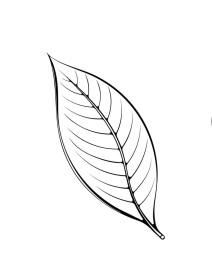


Trace each numeral. Match each numeral to the correct amount.
Find the numerals I, 2 and 3 at home. You could look on packets, boxes, books, calendars, labels, etc.
Let’s talk!
Digital resources: edco.ie/5me8.
Ask your child: what do we do at these three different times of the day? Your child then traces each numeral to show the order in which they do these activities.
Morning
Afternoon
Night
Colour
Help Monty to colour the circles. Use only red, yellow and blue The colours in each row must be in a different order!
Look for up to 5 of each object at home. How many of each can you find? Ring the correct number.






Use two colours to colour the clothes pegs. Example: 2 red and 3 yellow
Maths eyes
Sort your clothes pegs at home into their different colours. You could sort buttons or fruit instead.
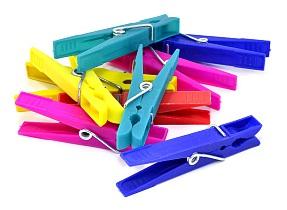
Ring the shape that is the odd one out in each row. Can you say why?







Let’s talk!
Use these words to talk with your child about the items you buy in your weekly food shop:
pointy corners sharp round flat rolls stacks does not roll
Example: a tin of beans will roll and stack.
Let’s talk!
Ask your child if they can identify the 2-D shapes in the images below: circle, square, rectangle and triangle. Watch out for these shapes at home and outside.









Ring your favourite shape above. Ring

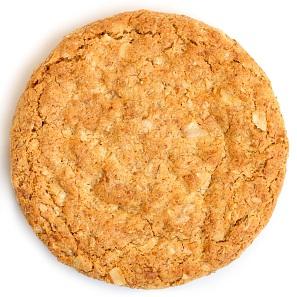


Trace the numerals.
Colour all the 0s.
Be creative – you could use thumbprints, crayons, stickers or something else!

I I 2 2 2 2 3 3 4 4 4 4 5 5 5 5 5 0 0 0 0 0 0 0

Can you find these things? Tick them off as you find them.
2 stones
2 cones
4 leaves 0 tigers
5 twigs 3 pebbles
I feather 5 birds



Colour the shapes the fish is made of. Use the same colours.
One fish is made up of the four coloured shapes. Which one? Colour that fish using the same colours.
l You will need: a , two different colour (one for you and one for your child).
l Your child throws the and, for example, gets a 4. They use their crayon to colour a square with 4 dots. Then it’s your turn!
l Whoever colours the last square wins! Let’s play!
Help Snow White to find the dwarfs’ hats. Colour each one when you find it. Have you counted and coloured all seven hats?
Let’s talk!
Ask your child: can you find seven objects around your home (such as seven clothes pegs or seven spoons)? Can you count them?
Ring the correct word. Colour the picture. on in in on up down under over over under down up
Let’s play!
l Play Hide and Seek with your child.
l Hide an object. Use these words as clues to help your child find the object. Example: ‘The object is under the rug.’ under over in on up down
Find the same shape in the lower box. Use the same colour to colour it.
Draw and cut out some triangles, squares and rectangles. Ask your child to name each shape. Move each shape into different positions (upside down, etc.). Can your child still identify each shape?
Count the number of each sea creature. Colour each group a different colour.
Which animal is on its own?









Can you find space to draw 4 ?


Count the objects in each picture.




Let’s talk!




Ask your child if they agree with Jay. Ask them to explain why.
I think that some groups are ‘easier’ to count.
Let’s play!
● This is a game for two players.
● You will need: a small counter each to move around the game (e.g. a button), a and some pebbles or small items.
● Take turns to throw the and move along that amount of stepping stones. Collect the amount of pebbles/items shown by the number on the stone. Example: if you land on a stone with ‘5’ on it, collect 5 pebbles/items.
● The game finishes when one player lands on the finish spot. Help your child to count their pebbles/items. The player with the most pebbles/items wins!
I I 2 2 2 3 3 3 4 4 4 5 5 5 6 6 6
Ring the object you would use to fill each container.
Try filling these containers at home.
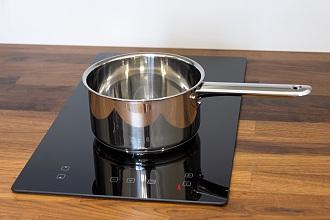

















Cut out colourful shapes or pictures from old comics or magazines. Stick the pieces onto the pillow and duvet cover. The example might give you some ideas!
Ask your child: was it easy or difficult to cover the duvet and pillow? Which pieces/shapes worked best? Example: big square pieces, little pieces or circles?
Use two colours to break up each group of objects.







Digital resources: edco.ie/uyh5.








l Your child is going to be adding numbers within I 0.
l You will need: a ‘Magic Roll’ (an empty toilet roll or kitchen roll insert), a bowl and small objects such as paperclips, buttons, bottle tops or coins.
l They take a handful of items, e.g. 5, and count them. They take another handful, e.g. 4.
l They slide all the items through the ‘Magic Roll’ and into the bowl.
l They count all the items in the bowl (9 items in the example).
They have now added 5 and 4!
l Play again with different amounts (totals within I0).
I slide all my objects down the Magic Roll! Count them. Count them. How many in the bowl?
Make sounds
Try the sound patterns below and/or make up some of your own!







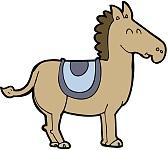










Make an outdoor pattern. You could use a leaf and a pebble and repeat. Draw what you made.
You and your child race to join the dots to make each picture. Rotate the page so you can complete the pictures at the same time. Start at I. Who finishes first: you or your child? Ready, steady, draw!
l This is a game for two players.
l You will need: a small counter each to move around the board (e.g. a button), a and some coins or small items to use as money. I item = I cent.
l Each player starts with Ic in their pocket/bank.
l The first player to throw a I starts and moves I space on the board.
l Keep throwing the dice and moving along the board to reach the pot of gold at the end of the rainbow.
l Read the signs as you go. Your child will need help to add or take away their money.
l Throw the exact number to finish.
l The person who gets to the pot of gold first wins!
It is your birthday. You receive 2c. How much money do you have now?
Teddy is 3c. Can you buy Teddy? If not, go back 2 spaces. 3c
2c Sale! Teddy is 2c. . Can you buy Teddy? If not, go back 2 spaces.
You sell Teddy for 4c. How much money have you now? 4c
You find 3c in your piggy bank. How much money have you now?
Aunty Lily gives you 5c. How much money have you now?
Can you buy the bucket and spade? If not, go back 3 spaces. 5c
Share the toppings between the two ice-creams. You will need: ‘toppings’ for the ice-creams (small items such as buttons or pebbles). Draw how you did it.
Let’s talk!
Ask your child: how will we make fair shares of an apple, a biscuit or six raisins?
Draw
Here are 6 bean seeds for the vegetable patch. Can you share the seeds into each part of the vegetable patch? How many will you draw in one part of the patch?

Draw
Now try with 8 beans.

Let’s talk!
Here’s what Monty does during the week. What do you do during the week? How is each of your days different to Monty’s?
Monday
On Monday, Monty goes to the dog park. What do you do on Monday?
Wednesday
On Wednesday, Monty plays with his friend. What do you do on Wednesday?
Friday
On Friday, Monty jumps on the trampoline. What do you do on Friday?
On Sunday, Monty has a rest. What do you do on Sunday?
Tuesday
On Tuesday, Monty goes swimming. What do you do on Tuesday?
On Thursday, Monty goes for a run. What do you do on Thursday?
Saturday
On Saturday, Monty goes to see his grandparents. What do you do on Saturday?
Sunday
Choose an activity.
Say a rhyme!
Say the rhyme ‘Hickory Dickory Dock’.
Hickory, dickory, dock.
The mouse ran up the clock.
The clock struck one, The mouse ran down, Hickory, dickory, dock.

Sing ‘The Hands on the Clock’ (to the tune of ‘The Wheels on the Bus’).
The hands on the clock go round and round, Round and round, round and round.
The hands on the clock go round and round, All day long.

Go on a Time Hunt around your home. Where can you see ‘time’? (Examples: on the oven, a phone, an alarm clock.) Draw what you find.
How many of each object can you find in your home?
Colour the correct amount of boxes for each object.

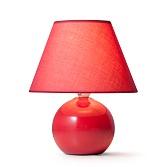
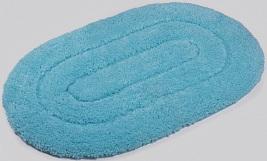

Let’s talk!
Ask your child to count the coloured boxes for each object. Which object has the most boxes? Which object has the least? beds lamps mats tables